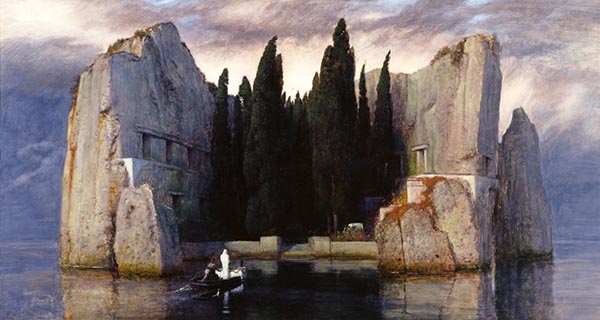NOTHING TO BE AFRAID OF
part III


That great temples should be constructed at locations rich in magnetism became an extension of this relationship with the paranormal. The practise was also an insurance policy for later times: should people ever become too immersed in the physical world and lose the ability to see the subtle one, they at least know where to go to reconnect. To help communication with the invisible, names were ascribed to entities who provided humanity with specific things, such as agriculture, the arts, or weather forecasting. These would in time be honoured— not worshiped— as gods, and visiting a temple would be like attending a meeting with family, such was the close relationship with otherworldly forces. And because there was no need for competition, the relationship between worlds benefited everybody. Indeed, this was Paradise.
The act of dying was regarded merely as a stage one goes through in the bigger scheme of things, a boat trip of the soul to ports on the sea of Infinity. As the Pyramid Texts assert, Egyptian temple culture stressed the importance of the conduct of the soul during its human incarnation, and the meticulous rites of passage afforded the deceased were a matter of great importance. Again, the cooperation with those paranormal forces called ‘gods’ was paramount in aiding the transfer of a bunch of molecules— the body and its soul— from one form and toward another. Death was the continuation of a great journey, not a destination. It was even cause for celebration.
Around 2600 BCE things change dramatically. A sudden reversal of weather and an abrupt rise in sea-levels coincides with the next 4320-year phase of human consciousness evolution. The feminine-cooperative experiment is slowly dismantled in favour of solar, masculine-driven power which has led us to experience the opposite properties of the divine feminine: control over cooperation, power of the few over the many, scarcity replaces abundance, fear trumps trust, knowledge slides into ignorance.
Existing sacred sites are adapted from lunar to solar, and inevitably, the places of connection with the world of the unseen are corrupted; understanding is lost and slowly the whole-istic system disintegrates into superstition. By 1300 BCE the climate deteriorated further. By the time of the Aztec and Mayan cultures, unlike the former keepers of the temples, the view of the invisible universe held by the newly entrenched priestly caste had become so distorted that it neither understood the relationship with nor possessed the ability to control the gods. Of course, no one ever did, it always had been a relationship. Out of an irrational fear of the wrath of the spirits, the priests condemned thousands of people to be slaughtered in open ball-courts to appease the spirit world, who never had it in for humanity in the first place.
The communicating cord with the invisible frayed, and the distance between god, good and hu-man, which the Church would eventually exploit, widened into an unbridgeable chasm. At this point humanity began to approach death with dread, and the gods of yesterday became the ghosts of today.
You could not write a better paranormal movie script, only this one is scarier, considering the many millions who died in the fruitless pursuit of appeasement.
It took until the late Victorian era for science— or a tiny band of enlightened scientists, at least— to engage with the bogey man. Just as Bram Stoker was putting the finishing flourishes to his canine-toothed protagonist, across the Irish Sea, in London, a group of gifted men of their day were busy inking an experiment that would prove the survival of the soul after death. The Society For Psychical Research was a brain trust of people such as William Crookes, who gave us the cathode ray tube, and Oliver Lodge, who, along with Tesla, gave us radio.
Lodge’s fascination with life after death had begun whilst a member of the Ghost Club. Later he designed a posthumous experiment whereby he would communicate from the otherworld using an alpha-numerical code based on sound. While the experiment appears to have worked shortly after his death in 1940, his initials, along with those of all the past presidents of the Society For Psychic Research reappeared in the 1990s, encoded in a number of those otherworldly geometric shapes created by sound, the crop circles.
Like the ancient Egyptians before, it appears these luminaries succeeded in proving that life is nothing more than a bunch of molecules and frequencies in a state of transition from one form into another.
It could be that most of the life that exists beyond the veil is not so paranormal after all. Modern research into parapsychology and quantum states suggest that a substantial part of it is us reassembled in a super-human, superabundant state. And our concept of this invisible world whether in film or in the mind, is shaped by our relationship with those forces that lie but a whisper away from our breath. So whenever you next celebrate Halloween, sorry, Halloween remember that this celebration of accelerated tooth-decay once was borne of higher, less menacing ideals: originally the Celtic feast of Sammhain, it was the time of tribute to the spirit world, to those who’d gone ahead to protect those in the physical world to survive the dark, cold months of winter. And in so doing, we rise safely out of the darkness and into the light each Spring.
© 2010 Freddy Silva. No unauthorized reproduction or electronic distribution. Painting: Island of the Dead by Arnold Bocklin
Return to Articles